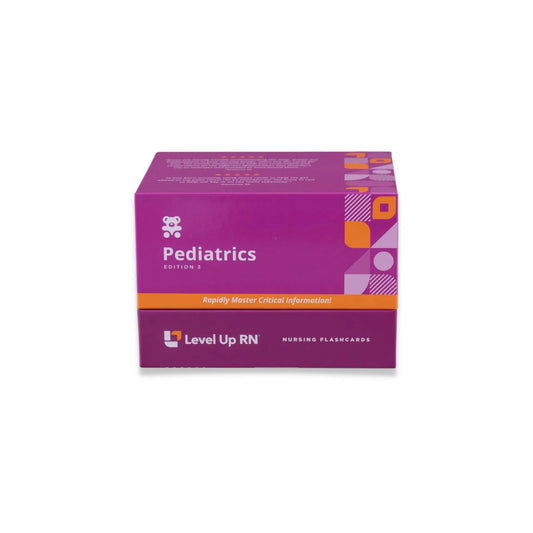Peds, part 19: Respiratory Disorders - Cystic Fibrosis
Updated: Cathy ParkesCystic Fibrosis. The pathophysiology, signs/symptoms, diagnosis, treatment, and nursing care of patients with Cystic Fibrosis.
Full Transcript: Peds, part 19: Respiratory Disorders - Cystic Fibrosis
Full Transcript: Peds, part 19: Respiratory Disorders - Cystic Fibrosis
Hi, I'm Cathy, with Level Up RN. In this video we are going to talk about cystic fibrosis, and at the end of the video I'm going to give you guys a little quiz to test your understanding of some of the information I'll be presenting here in the video. So definitely stay tuned for that. So cystic fibrosis is a genetic disorder. It's an autosomal recessive disorder that severely impairs lung function, and it also affects the function of other organs as well. With cystic fibrosis, we have abnormally thick, sticky mucus that really plugs the organ ducts in the lungs, in the pancreas, in the liver, in the small intestine, and in the reproductive organs. And this can lead to organ failure.
In terms of symptoms, we have a lot of respiratory symptoms which include wheezing, coughing, dyspnea, mucus plugs, cyanosis, a barrel-shaped chest, clubbing, and chronic respiratory infections. And then we will have a lot of gastrointestinal symptoms as well, which can include steatorrhea, which is like fatty, malodorous stool, delayed growth and a deficiency in fat-soluble vitamins, which include vitamins A, D, E, and K. And then in terms of the skin, a patient with cystic fibrosis will have abnormally high sodium chloride content in their sweat, saliva, and tears.
Diagnosis of cystic fibrosis can include a sweat chloride test, DNA testing, pulmonary function test, as well as a stool analysis. In terms of treatment, there are a variety of medications that can be helpful with cystic fibrosis. This includes bronchodilators, anticholinergic, Dornase Alpha, which helps to thin the secretions in the respiratory tract, mucolytics, as well as antibiotics for pulmonary infections, and then we would also give the patient pancreatic enzymes with their meals and snacks to help break down and digest their food because pancreatic function is impaired with that thick, sticky mucus.
In terms of procedures, chest physiotherapy is definitely going to be helpful for your patient with cystic fibrosis. Chest physiotherapy involves the use of percussion, vibration, postural drainage and breathing exercises to help loosen up those respiratory secretions. So you want to make sure you schedule your patient's chest physiotherapy sessions before meals or several hours after meals so that they don't vomit while they're doing these different exercises. And then you also want to give them a bronchodilator treatment 30 minutes to one hour before they're going to have their chest physiotherapy. In terms of nursing care of cystic fibrosis, you're going to administer oxygen as ordered. You're going to encourage the patient to increase their fluid intake, as well as their protein and calorie intake. And then you want to provide fat-soluble vitamin supplements as well. So this is vitamins A, D, E, and K.
Okay, time for a quick quiz. I have three straightforward questions for you guys. No select all that apply, or case studies, just trying to test your understanding of the key facts I discussed in the video. Question number one. Fatty malodorous stools are an expected finding in a patient with cystic fibrosis. True or false? The answer is true. Second question. When should your patient take their pancreatic enzymes? The answer is with their meals and snacks. And then question number three. Chest physiotherapy should be scheduled directly after meals. True or false? The answer is false, because the patient may vomit with their getting chest physiotherapy right after they eat. So you want to schedule it before meals or several hours after meals. Okay, that's it for cystic fibrosis. Hope you enjoyed this video. Be sure to like the video and leave me a comment and let me know what was most helpful for you. Thank you so much for watching.


